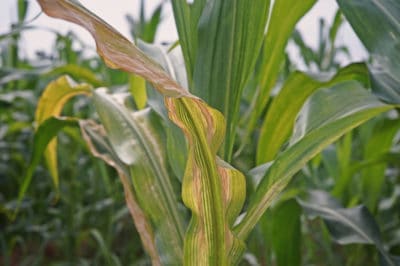What is Corn Blight?
Corn blight is the general name for a group of similar fungi that attack corn plants. The disease appears first on the leaves, and then spreads to the stalk and, if left untreated, will start to affect the kernels of corn. In extreme cases, leaf blight will cause your corn stalks to rot and fall over, which ruins the entire crop.
Depending on where you live, some of the specific names of different corn blights include:
- Gray Leaf Spot
- Anthracnose Leaf Blight
- Southern Corn Leaf Blight
- Nttheen Corn Leaf Blight
Treating Corn Blight
Although there are no proven methods of entirely eradicating corn blight, there are things you can do to treat this insidious disease. The key to treatment is to pay careful attention to your corn leaves and take action as soon as you are aware that you have corn blight.
Tip: There are several different fungicides on the market that can help control the corn blight. However, not all fungicides work the same way, so if you choose this route, be sure of which type of corn blight you should be treating.
Preventing Corn Blight
If you are an organic farmer, fungicides are not usually an option unless you can find a high-quality natural treatment for fungal diseases. However, prevention is a far more natural way to control and eradicate corn blight and is infinitely preferable than spraying chemicals on your corn.
Most of the time, fungi overwinter in corn stalks and spread rapidly once new corn seeds start to sprout. To prevent the spores from multiplying, be sure to till the corn stalks deep into the ground once the harvest is complete. Do this every time you plant corn, not just when a disease is present.
If you notice even the slightest irregularity in your corn stalks that could be a disease, do not till the corn under or place it in your compost pile. Instead, burn the corn debris where it stands in the filed, then till the ashes into the ground.
Other methods of prevention include the practice of crop rotation, as well as planting hybrids that may be less susceptible to disease. While it may seem like more work, proper organic planting methods are far better than losing your entire crop to corn blight.
